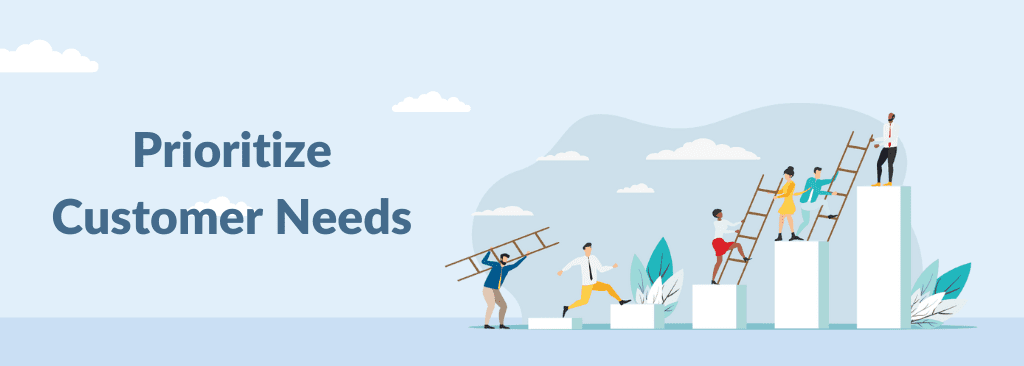How Do You Prioritize Customer Needs?
I read this article on Forbes titled “10 customer service tips to enhance your customers’ experience.”
In this article, Forbes Business Council members shared customer service stories across various industries exploring the experiences that have remained etched in their memories.
This is what Samuel Johnston of nth Venture had to say:
“I helped a B2B Software as a Service (SaaS) client facing a critical software issue that was threatening their public sector operations. We quickly assembled a team, provided a dedicated point of contact, and worked with the product team to find a solution. Our efforts paid off, and the client was grateful and referred several new clients to us. This reinforced the importance of prioritizing customer needs and being proactive.“
Prioritizing customer needs caught my eye, and as a business, I believe you should be maniacally focused on customer needs.
Most customers would want a bunch of customizations to suit their needs.
How Do You Prioritize the Needs of Your Customers?
Let me explain this with an example.
We were working with a BPO that handled multiple processes for their customers.
Before we began the implementation, we involved the customer’s key stakeholders in gathering their input, validating assumptions, and ensuring alignment with their needs.
With this exercise, we identified their challenges and needs.
Their specific challenges and needs included:
- Turnaround time for support tickets was very high with their incumbent provider, affecting their business negatively. They wanted immediate resolutions.
- Customization – every process required a certain level of customization, which meant an additional fat cost that they were paying their vendors. They wanted the cost of customization to be brought down drastically.
- Reporting and Analytics – with their incumbent provider, reporting had a lot of irrelevant and insignificant data. Besides, there was very little analytics or intelligence for them to gain insights from the data. They wanted insights and wanted to spend less time pulling together reports.
- Downtime – their incumbent provider had a couple of hours of downtime every day. Getting them back up and running meant additional testing, which took up a lot more hours than just the downtime. They wanted to avoid downtime and looked at an uptime greater than 99%.
Once we identified their needs and challenges, we defined the success criteria for the implementation, where we would address all of their challenges besides improving their efficiency and the overall customer experience they provide.
What Did We Do About It?
We ensured that we addressed all of these challenges proactively. With our platform, they don’t even have to think of these as challenges.
How did we address the challenges of this specific customer?
Support Turnaround Times
We provided immediate turnaround times for their support needs. We address about 95% of the issues immediately, and only high-level issues take a turnaround time of a day or two.
The transition for the customer was drastic as they moved from a turnaround time of two days to immediate resolutions.
Customization
Our platform is designed to be easily configurable, extendible, and integrable. Besides, we include customizations as a part of our delivery and charge the customer only the usage costs.
Reporting and Analytics
We helped the customer make sense of the mammoth data (3 lac rows) they generate every day with our analytics and intelligence engine.
We provided all the reports in .CSV format, which allowed them to slice and dice the data easily. We also offered configurable dashboard views of the reports with all the relevant information that helped the customer make decisions.
We easily saved 100s of hours for the customer in report generation.
Uptime
As a cloud call center solution provider, we ensure redundancy and availability at the server level itself. Any switchover is seamlessly done and does not affect business continuity.
We have all along provided greater than 99% uptime to our customers.
Today, the customer is pitching our solution whenever they send a proposal to a new client. The customer has become a champion of our product, which is a testimony of how well our solution and the associated services have impacted them.
We constantly keep in touch with the customer, gather feedback through surveys and feedback forms, and have customer conversations with them to collect ongoing insights and the customers’ needs and address them in real time.
